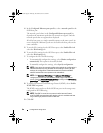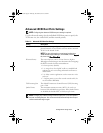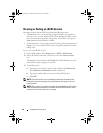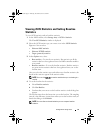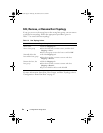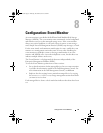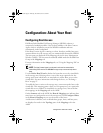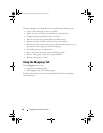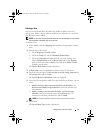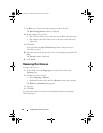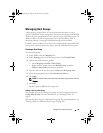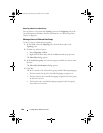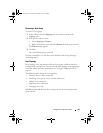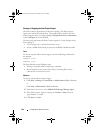
Configuration: About Your Host 95
9
Configuration: About Your Host
Configuring Host Access
Dell PowerVault Modular Disk Storage Manager (MDSM) software is
comprised of multiple modules. One of these modules is the Host Context
Agent, which is installed as part of the MDSM installation and runs
continuously in the background.
If the Host Context Agent is running on a host, that host and the host ports
connected from it to the storage array are automatically detected by MDSM.
The host ports are displayed in the Mappings tab in the Array Management
Window (AMW). The host must be manually added under the Default Host
Group in the Mappings tab.
For more information on the Mappings tab, see "Using the Mappings Tab" on
page 96.
NOTE: The Host Context Agent is not dynamic and must be restarted after
establishing iSCSI sessions for MD3600i storage arrays to automatically detect
them.
Use the Define Host Wizard to define the hosts that access the virtual disks
in the storage array. Defining a host is one of the steps required to let the
storage array know which hosts are attached to it and to allow access to the
virtual disks. For more information on defining the hosts, see "Defining a
Host" on page 97.
To enable the host to write to the storage array, you must map the host to the
virtual disk. This mapping grants a host or a host group access to a particular
virtual disk or to a number of virtual disks in a storage array. You can define
the mappings on the Mappings tab in the AMW.
On the Summary tab in the AMW, the Hosts & Mappings area indicates how
many hosts are configured to access the storage array. Click Configured Hosts
in the Hosts & Mappings area to see the names of the hosts.
A collection of elements, such as default host groups, hosts, and host ports,
are displayed as nodes in the Topology pane of the Mappings tab in the
AMW.
book.book Page 95 Thursday, December 9, 2010 3:20 PM




